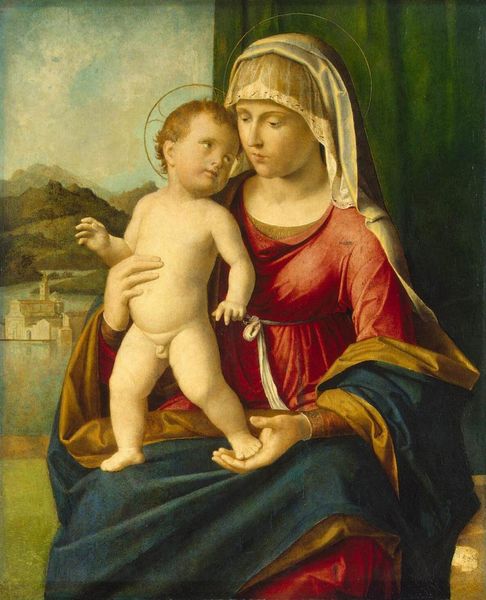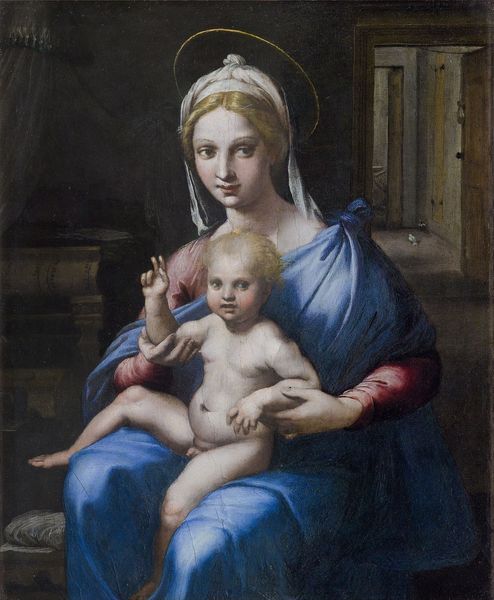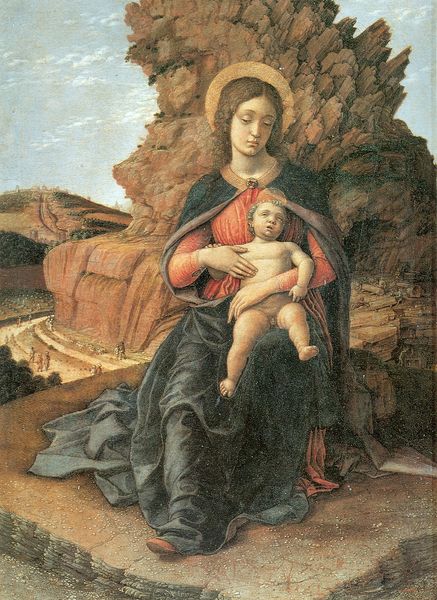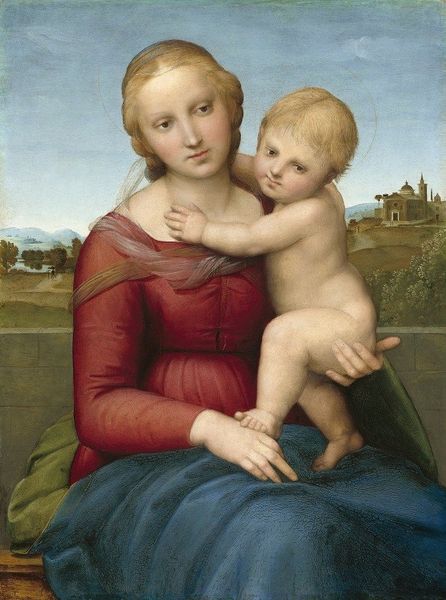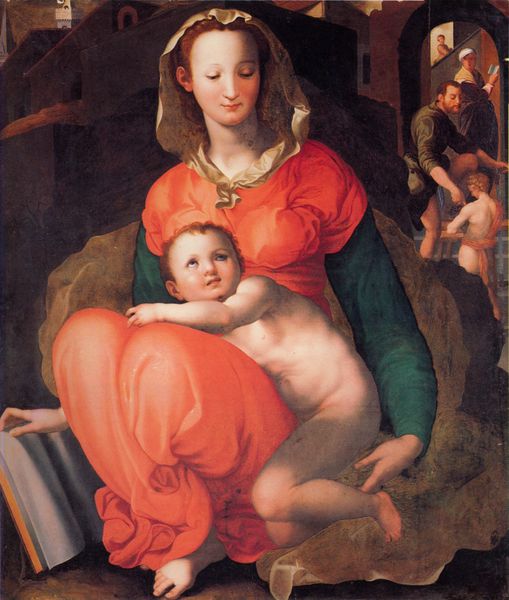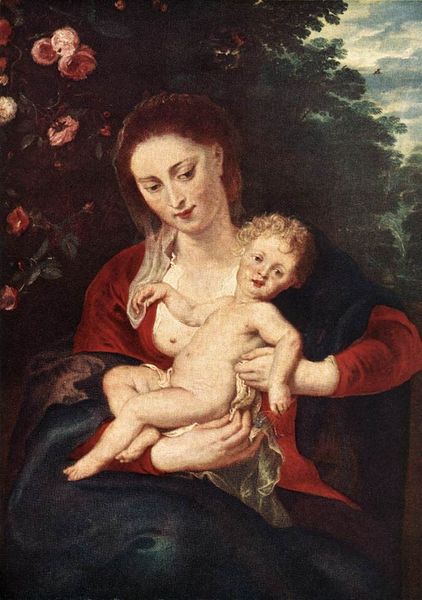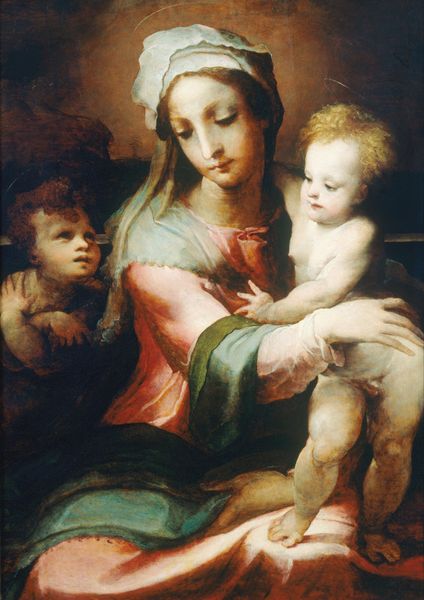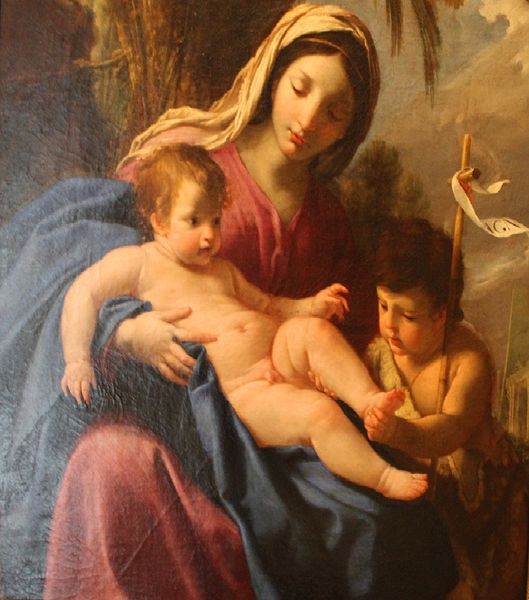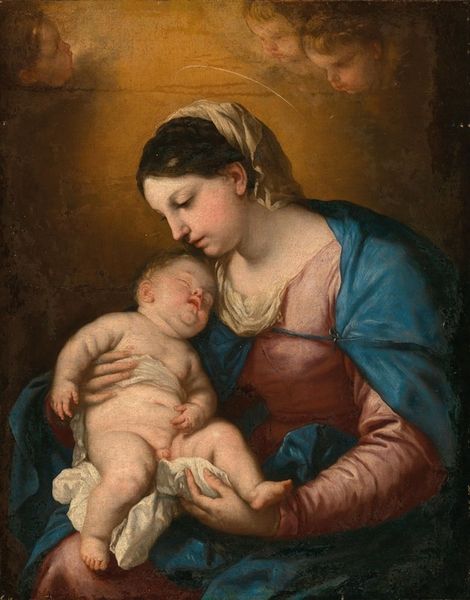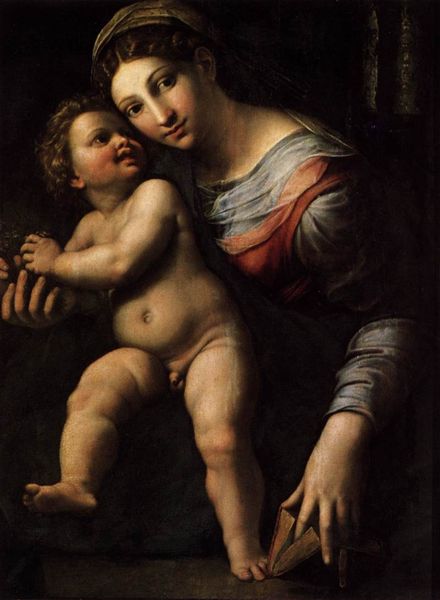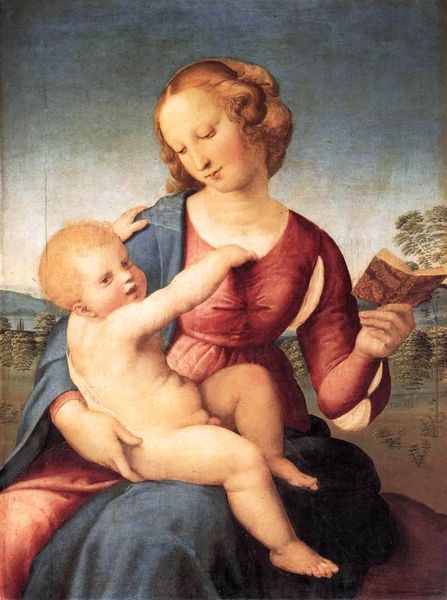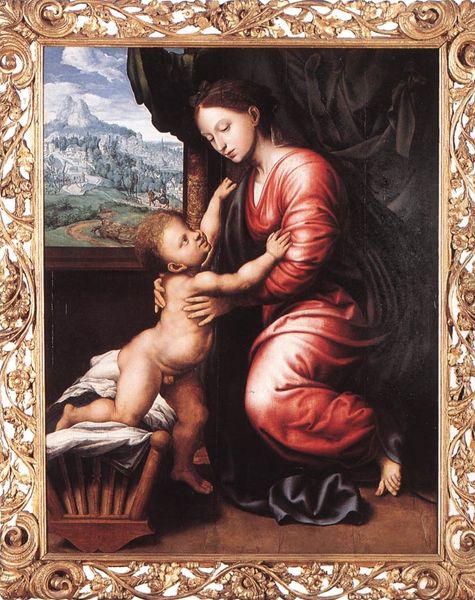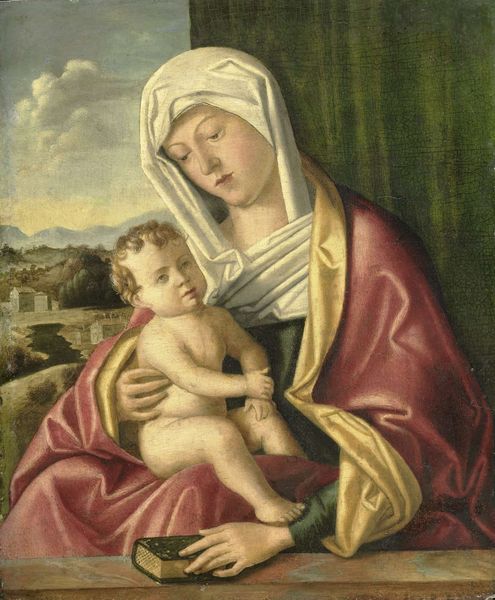
painting, oil-paint
#
portrait
#
high-renaissance
#
painting
#
oil-paint
#
figuration
#
11_renaissance
#
madonna
#
oil painting
#
child
#
history-painting
#
italian-renaissance
Copyright: Public domain
Editor: This oil painting, "Madonna and Child," by Dosso Dossi, dates back to around 1525. It has a kind of melancholic stillness to it, and it definitely diverges from what I think of as the iconic Renaissance "Madonna and Child" representation. How would you interpret the emotional significance conveyed through its symbols and composition? Curator: Notice how Dossi employs a soft sfumato, that smoky haziness, reminiscent of Leonardo, to almost veil the scene. Look closely at Mary's downcast gaze and the child's rather pensive expression. What do these elements, combined with the looming, dark background, evoke for you? Are we seeing simply motherly love, or perhaps a foreshadowing of the child’s destiny? Editor: I see it...there's a vulnerability that’s so compelling. The halos, of course, symbolize holiness, but their subtle, almost muted execution makes them feel… less grand, more human. Curator: Precisely. Consider too, the broader history. Images like this were not simply devotional aids but functioned within intricate social, political, and even personal belief systems. Dossi, in his unique rendering, may be subtly challenging the very notion of divine perfection. What does this personalization of an established iconography tell you about the evolving Renaissance mindset? Editor: That's fascinating. I guess I had always viewed these paintings in a very fixed, reverential light, but considering the potential for artists to subtly challenge those norms gives the work so much more depth. Curator: Indeed. Every detail, from the choice of color to the slightest shift in expression, carries within it layers of cultural memory and artistic intention. It’s through unraveling these visual symbols that we can truly connect with the artwork and its historical context. Editor: Thank you! I now understand the painting better, from historical and psychological viewpoints, in addition to its more obvious artistic choices.
Comments
No comments
Be the first to comment and join the conversation on the ultimate creative platform.
